

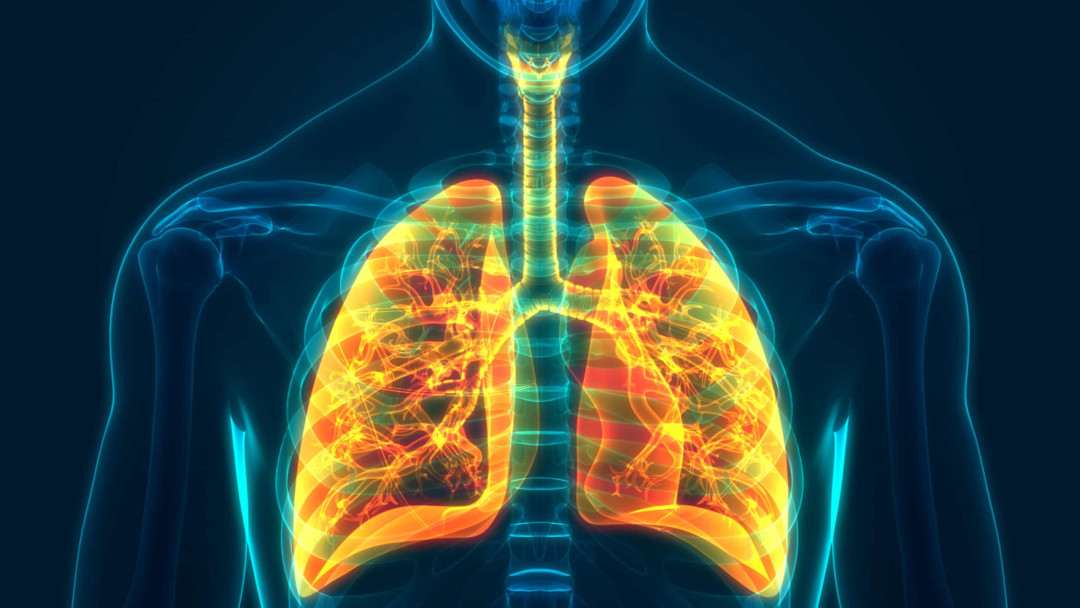
































See Also
See Again
© Getty Images
0 / 35 Fotos
COPD definition
- Chronic obstructive pulmonary disease (COPD) is the name for a group of chronic inflammatory lung diseases that cause obstructed airflow from the lungs.
© Shutterstock
1 / 35 Fotos
Emphysema
- The two most common conditions of COPD are emphysema and chronic bronchitis. Emphysema, or pulmonary emphysema, is a chronic lower respiratory tract disease where the air sacs in the lungs (alveoli) are damaged.
© Shutterstock
2 / 35 Fotos
Chronic bronchitis
- Chronic bronchitis is inflammation (swelling) and irritation of the bronchial tubes, the airways leading to your lungs.
© Shutterstock
3 / 35 Fotos
Symptoms of COPD
- COPD symptoms vary, and often don't appear until significant lung damage has occurred. An early sign that something is amiss is shortness of breath, especially during physical activities.
© Shutterstock
4 / 35 Fotos
Wheezing
- Wheezing, the shrill, coarse whistling or rattling sound your breath makes when your airway is partially blocked, is an obvious sign of difficulty with breathing.
© Shutterstock
5 / 35 Fotos
Chesty cough
- A persistent chesty cough or hack that produces sputum or thick phlegm is another main symptom of COPD.
© Shutterstock
6 / 35 Fotos
Chest infections
- Those suffering the onset of COPD experience chest infections—for example, lower respiratory tract infections, both acute and chronic— with increased frequency.
© Shutterstock
7 / 35 Fotos
Lack of energy
- Persistent coughing, wheezing, and a propensity to chest infection is debilitating and often results in fatigue and a lack of energy.
© Shutterstock
8 / 35 Fotos
Swelling
- Swelling in the ankles, feet, or legs can be a sign of COPD. Swelling happens due to complications of COPD called pulmonary hypertension. It's another warning sign not to be ignored.
© Shutterstock
9 / 35 Fotos
When to see a doctor
- If symptoms persist over several days, it's time to see a doctor. This is especially so if you're over 35 and a habitual smoker, or used to smoke. And always seek immediate medical care if you can't catch your breath.
© Shutterstock
10 / 35 Fotos
Diagnosing COPD
- In order to determine an accurate diagnosis of COPD your doctor will ask you about your symptoms. Analysis usually includes a number of tests.
© Shutterstock
11 / 35 Fotos
Chest examination
- Typically, a patient will undergo a simple chest examination. The doctor will need to listen to your breathing using a stethoscope.
© Shutterstock
12 / 35 Fotos
Spirometry
- Depending on signs and symptoms, they may also do, or arrange for you to have, a breathing test called spirometry. This is a common procedure undertaken to assess how well your lungs work by measuring how much air you inhale, how much you exhale, and how quickly you exhale.
© Shutterstock
13 / 35 Fotos
Chest X-ray
- COPD diagnostics usually extend to a chest X-ray. An X-ray can be used to look for problems in the lungs that can cause similar symptoms to COPD. It can also reveal emphysema, one of the main causes of the disease.
© Shutterstock
14 / 35 Fotos
Blood tests
- Your doctor may recommend an arterial blood gas analysis. This measures how well your lungs are bringing oxygen into your blood and removing carbon dioxide. A blood test can also determine conditions that can cause similar symptoms to COPD.
© Shutterstock
15 / 35 Fotos
Genetic problem
- A blood test can also identify whether or not you have alpha-1-antitrypsin deficiency. This is a rare genetic problem that increases your risk of COPD.
© Shutterstock
16 / 35 Fotos
Additional tests
- Further tests to confirm the diagnosis or to determine the severity of COPD may include an electrocardiogram, echocardiogram, CT scan, and peak flow test—a breathing test that measures how fast you can blow air out of your lungs.
© Shutterstock
17 / 35 Fotos
Causes of COPD
- Data published by WHO points to the lung damage caused by long-term smoking as the leading cause of COPD. In fact, smoking is thought to be responsible for around nine in every 10 cases. Note, however, that just because you smoke it doesn't necessarily follow that you will develop the disease.
© Shutterstock
18 / 35 Fotos
Dusts and chemicals
- Other causes of COPD include long-term exposure to occupational dusts and chemicals, fumes and vapors for example that can irritate and inflame your lungs.
© Shutterstock
19 / 35 Fotos
Fumes
- Other important risk factors include welding fumes and those emitted from burning fuel. In the developing world, people exposed to fumes from burning fuel for cooking and heating in poorly ventilated homes are at higher risk of developing COPD. Likewise, childhood respiratory infections are other important risk factors for COPD in developing nations.
© Shutterstock
20 / 35 Fotos
Grain and flour dust
- Exposure to grain and flour dust is associated with the development of respiratory symptoms and varying degrees of reduction in lung function.
© Shutterstock
21 / 35 Fotos
People with asthma
- People with asthma and already suffering a chronic inflammatory airway disease are at high risk of developing COPD. The risk factor increases considerably if they are also exposed to tobacco smoke.
© Shutterstock
22 / 35 Fotos
Air pollution
- According to The Lancet, air pollution exposure is considered an important risk factor for COPD, though the link is not conclusive and research is ongoing.
© Shutterstock
23 / 35 Fotos
Complications from COPD
- The most common complication of COPD is what's known as a exacerbation, or flare-up, in which respiratory symptoms suddenly worsen.
© Shutterstock
24 / 35 Fotos
Lung cancer
- People with COPD have a higher risk of developing lung cancer.
© Shutterstock
25 / 35 Fotos
Depression
- Being stricken with any medical disorder that inhibits your ability to undertake daily activities can induce feelings of anxiety and a depressed state of mind. COPD is no different.
© Shutterstock
26 / 35 Fotos
Heart problems
- Patients with severe COPD are particularly vulnerable to cardiac disease, for example the aforementioned pulmonary hypertension. This happens when the pressure in the blood vessels leading from the heart to the lungs is too high.
© Shutterstock
27 / 35 Fotos
Treatment and prevention
- The best way to prevent COPD is to never smoke. Of course, many people do. So, quit smoking now. If this sounds like an insurmountable hurdle, it's essential to find a tobacco cessation program that can help you stub out the habit for good.
© Shutterstock
28 / 35 Fotos
Treatment and prevention
- The best way to prevent COPD is to never smoke. Of course, many people do. So, quit smoking now. If this sounds like an insurmountable hurdle, it's essential to find a tobacco cessation program that can help you stub out the habit for good.
© Shutterstock
29 / 35 Fotos
Vaccinations
- Keep up to date with your jabs. Get an annual flu vaccination and regular vaccination against pneumococcal pneumonia. This will help lessen the risks of some infections.
© Shutterstock
30 / 35 Fotos
Use of inhaler
- If COPD is affecting your breathing, you'll usually be given an inhaler. Indeed, short-acting bronchodilator inhalers are often the first treatment recommended. An inhaler can help relieve coughing and shortness of breath and make breathing easier.
© Shutterstock
31 / 35 Fotos
Lung therapies
- Another option in the fight against COPD is pulmonary rehabilitation, or PR (pictured). PR is a program of exercise and education designed to assist those living with the condition. Treatments include breathing techniques and positions to help you when you're out of breath, and tips on how to use your inhalers and other medicines.
© Shutterstock
32 / 35 Fotos
Supplemental oxygen
- Long-term sufferers of COPD may be advised to have oxygen at home through nasal tubes or a mask to maintain sufficient blood-oxygen levels.
© Shutterstock
33 / 35 Fotos
Surgery
- One of the last resorts in tackling COPD is surgery. This is an option for some with severe emphysema who aren't helped sufficiently by medications alone. A lung transplant may be required in extreme cases. Sources: (WHO) (The Guardian) (MedlinePlus) (Johns Hopkins Medicine) (European Respiratory Journal) (International Journal of Tuberculosis and Lung Disease) (The Lancet) (WebMD) (American Lung Association) (British Lung Foundation) See also: Things you might not realize are hurting your lungs
© Shutterstock
34 / 35 Fotos
© Getty Images
0 / 35 Fotos
COPD definition
- Chronic obstructive pulmonary disease (COPD) is the name for a group of chronic inflammatory lung diseases that cause obstructed airflow from the lungs.
© Shutterstock
1 / 35 Fotos
Emphysema
- The two most common conditions of COPD are emphysema and chronic bronchitis. Emphysema, or pulmonary emphysema, is a chronic lower respiratory tract disease where the air sacs in the lungs (alveoli) are damaged.
© Shutterstock
2 / 35 Fotos
Chronic bronchitis
- Chronic bronchitis is inflammation (swelling) and irritation of the bronchial tubes, the airways leading to your lungs.
© Shutterstock
3 / 35 Fotos
Symptoms of COPD
- COPD symptoms vary, and often don't appear until significant lung damage has occurred. An early sign that something is amiss is shortness of breath, especially during physical activities.
© Shutterstock
4 / 35 Fotos
Wheezing
- Wheezing, the shrill, coarse whistling or rattling sound your breath makes when your airway is partially blocked, is an obvious sign of difficulty with breathing.
© Shutterstock
5 / 35 Fotos
Chesty cough
- A persistent chesty cough or hack that produces sputum or thick phlegm is another main symptom of COPD.
© Shutterstock
6 / 35 Fotos
Chest infections
- Those suffering the onset of COPD experience chest infections—for example, lower respiratory tract infections, both acute and chronic— with increased frequency.
© Shutterstock
7 / 35 Fotos
Lack of energy
- Persistent coughing, wheezing, and a propensity to chest infection is debilitating and often results in fatigue and a lack of energy.
© Shutterstock
8 / 35 Fotos
Swelling
- Swelling in the ankles, feet, or legs can be a sign of COPD. Swelling happens due to complications of COPD called pulmonary hypertension. It's another warning sign not to be ignored.
© Shutterstock
9 / 35 Fotos
When to see a doctor
- If symptoms persist over several days, it's time to see a doctor. This is especially so if you're over 35 and a habitual smoker, or used to smoke. And always seek immediate medical care if you can't catch your breath.
© Shutterstock
10 / 35 Fotos
Diagnosing COPD
- In order to determine an accurate diagnosis of COPD your doctor will ask you about your symptoms. Analysis usually includes a number of tests.
© Shutterstock
11 / 35 Fotos
Chest examination
- Typically, a patient will undergo a simple chest examination. The doctor will need to listen to your breathing using a stethoscope.
© Shutterstock
12 / 35 Fotos
Spirometry
- Depending on signs and symptoms, they may also do, or arrange for you to have, a breathing test called spirometry. This is a common procedure undertaken to assess how well your lungs work by measuring how much air you inhale, how much you exhale, and how quickly you exhale.
© Shutterstock
13 / 35 Fotos
Chest X-ray
- COPD diagnostics usually extend to a chest X-ray. An X-ray can be used to look for problems in the lungs that can cause similar symptoms to COPD. It can also reveal emphysema, one of the main causes of the disease.
© Shutterstock
14 / 35 Fotos
Blood tests
- Your doctor may recommend an arterial blood gas analysis. This measures how well your lungs are bringing oxygen into your blood and removing carbon dioxide. A blood test can also determine conditions that can cause similar symptoms to COPD.
© Shutterstock
15 / 35 Fotos
Genetic problem
- A blood test can also identify whether or not you have alpha-1-antitrypsin deficiency. This is a rare genetic problem that increases your risk of COPD.
© Shutterstock
16 / 35 Fotos
Additional tests
- Further tests to confirm the diagnosis or to determine the severity of COPD may include an electrocardiogram, echocardiogram, CT scan, and peak flow test—a breathing test that measures how fast you can blow air out of your lungs.
© Shutterstock
17 / 35 Fotos
Causes of COPD
- Data published by WHO points to the lung damage caused by long-term smoking as the leading cause of COPD. In fact, smoking is thought to be responsible for around nine in every 10 cases. Note, however, that just because you smoke it doesn't necessarily follow that you will develop the disease.
© Shutterstock
18 / 35 Fotos
Dusts and chemicals
- Other causes of COPD include long-term exposure to occupational dusts and chemicals, fumes and vapors for example that can irritate and inflame your lungs.
© Shutterstock
19 / 35 Fotos
Fumes
- Other important risk factors include welding fumes and those emitted from burning fuel. In the developing world, people exposed to fumes from burning fuel for cooking and heating in poorly ventilated homes are at higher risk of developing COPD. Likewise, childhood respiratory infections are other important risk factors for COPD in developing nations.
© Shutterstock
20 / 35 Fotos
Grain and flour dust
- Exposure to grain and flour dust is associated with the development of respiratory symptoms and varying degrees of reduction in lung function.
© Shutterstock
21 / 35 Fotos
People with asthma
- People with asthma and already suffering a chronic inflammatory airway disease are at high risk of developing COPD. The risk factor increases considerably if they are also exposed to tobacco smoke.
© Shutterstock
22 / 35 Fotos
Air pollution
- According to The Lancet, air pollution exposure is considered an important risk factor for COPD, though the link is not conclusive and research is ongoing.
© Shutterstock
23 / 35 Fotos
Complications from COPD
- The most common complication of COPD is what's known as a exacerbation, or flare-up, in which respiratory symptoms suddenly worsen.
© Shutterstock
24 / 35 Fotos
Lung cancer
- People with COPD have a higher risk of developing lung cancer.
© Shutterstock
25 / 35 Fotos
Depression
- Being stricken with any medical disorder that inhibits your ability to undertake daily activities can induce feelings of anxiety and a depressed state of mind. COPD is no different.
© Shutterstock
26 / 35 Fotos
Heart problems
- Patients with severe COPD are particularly vulnerable to cardiac disease, for example the aforementioned pulmonary hypertension. This happens when the pressure in the blood vessels leading from the heart to the lungs is too high.
© Shutterstock
27 / 35 Fotos
Treatment and prevention
- The best way to prevent COPD is to never smoke. Of course, many people do. So, quit smoking now. If this sounds like an insurmountable hurdle, it's essential to find a tobacco cessation program that can help you stub out the habit for good.
© Shutterstock
28 / 35 Fotos
Treatment and prevention
- The best way to prevent COPD is to never smoke. Of course, many people do. So, quit smoking now. If this sounds like an insurmountable hurdle, it's essential to find a tobacco cessation program that can help you stub out the habit for good.
© Shutterstock
29 / 35 Fotos
Vaccinations
- Keep up to date with your jabs. Get an annual flu vaccination and regular vaccination against pneumococcal pneumonia. This will help lessen the risks of some infections.
© Shutterstock
30 / 35 Fotos
Use of inhaler
- If COPD is affecting your breathing, you'll usually be given an inhaler. Indeed, short-acting bronchodilator inhalers are often the first treatment recommended. An inhaler can help relieve coughing and shortness of breath and make breathing easier.
© Shutterstock
31 / 35 Fotos
Lung therapies
- Another option in the fight against COPD is pulmonary rehabilitation, or PR (pictured). PR is a program of exercise and education designed to assist those living with the condition. Treatments include breathing techniques and positions to help you when you're out of breath, and tips on how to use your inhalers and other medicines.
© Shutterstock
32 / 35 Fotos
Supplemental oxygen
- Long-term sufferers of COPD may be advised to have oxygen at home through nasal tubes or a mask to maintain sufficient blood-oxygen levels.
© Shutterstock
33 / 35 Fotos
Surgery
- One of the last resorts in tackling COPD is surgery. This is an option for some with severe emphysema who aren't helped sufficiently by medications alone. A lung transplant may be required in extreme cases. Sources: (WHO) (The Guardian) (MedlinePlus) (Johns Hopkins Medicine) (European Respiratory Journal) (International Journal of Tuberculosis and Lung Disease) (The Lancet) (WebMD) (American Lung Association) (British Lung Foundation) See also: Things you might not realize are hurting your lungs
© Shutterstock
34 / 35 Fotos
What is chronic obstructive pulmonary disease?
Therapy can reduce the advancement of the condition and manage its symptoms successfully
© Getty Images
According to the World Health Organization (WHO), chronic obstructive pulmonary disease (COPD) is the third leading cause of death worldwide, causing 3.3 million deaths in 2019. In 2020, 148,512 people died from COPD in the United States, while in the UK an estimated 30,000 people die from the disease each year. COPD is a common disease and, while there is currently no cure, treatment can help slow the progression of the condition and control the symptoms. But COPD is also a preventable disorder, with healthy lifestyle choices key factors in halting its onset. So, what exactly is COPD, and how do its symptoms manifest themselves?
Click through and find out more about this debilitating and potentially fatal disease.
RECOMMENDED FOR YOU















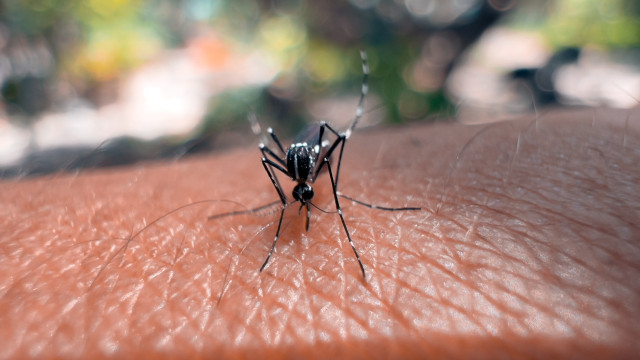



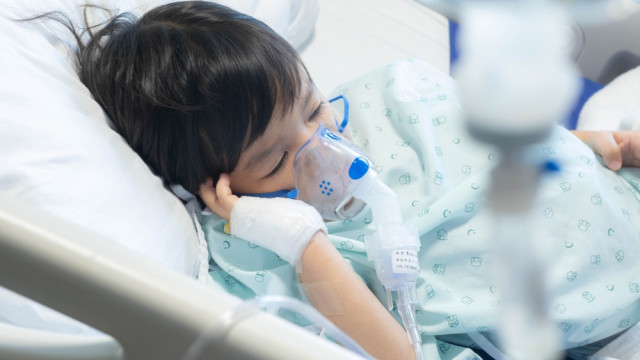













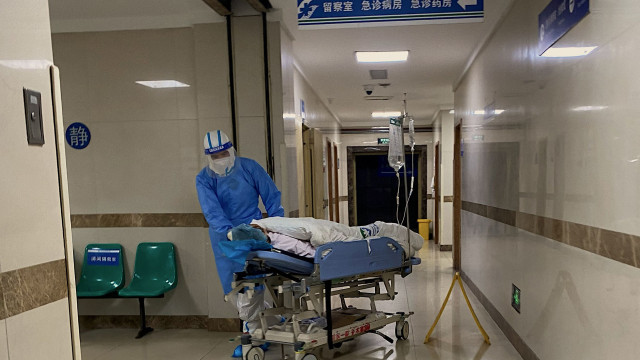
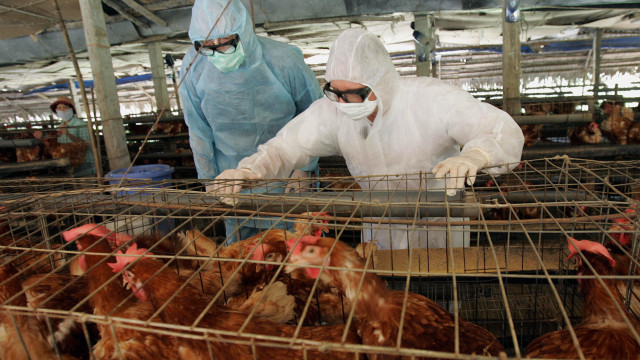

MOST READ
- Last Hour
- Last Day
- Last Week








